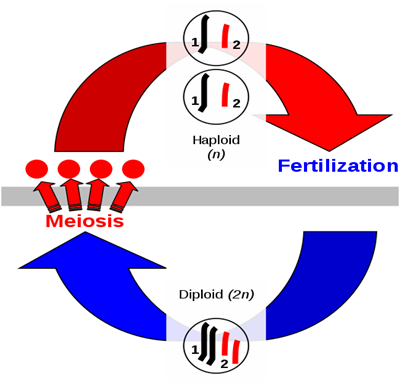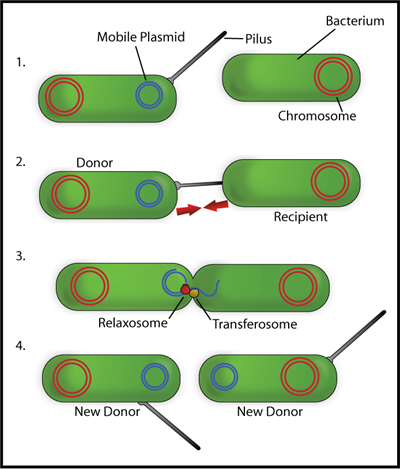
PUMPA - SMART LEARNING
எங்கள் ஆசிரியர்களுடன் 1-ஆன்-1 ஆலோசனை நேரத்தைப் பெறுங்கள். டாப்பர் ஆவதற்கு நாங்கள் பயிற்சி அளிப்போம்
Book Free DemoSexual reproduction is the development of new individuals through the fusion of two types of gametes or sex cells (biparental).
Sexual reproduction is also called amphimixis (Amphi means both, Mixis means union), syngenesis or amphigony.

Sexual reproduction involving the fusion of haploid male and female gametes
In human beings, the process of sexual reproduction involves both the male and female parent. The new individual develops from the fusion cell called a zygote. Human reproduction involves separate and complex male and female reproductive systems. In this chapter, we will study human reproduction in detail.
Types of sexual reproduction:
a. Syngamy:
Fusion of two haploid gametes resulting in the formation of a diploid zygote. Thus, syngamy refers to the process of fertilisation.
b. Conjugation:
Two organisms come together in a temporary fusion where the male and the female gametes exchange through a temporary cytoplasmic bridge. This is observed in unicellular organisms, such as bacteria and protozoa.

Conjugation in Bacteria
Characteristics of Sexual reproduction:
1. It involves two parents, i.e., biparental.
2. Gametes are always produced.
3. Occurs through the process of fertilisation.
4. Mitosis and meiosis are involved in sexual reproduction.
5. Variations are present due to the combination or mixing of genes during crossing over.
6. Daughter cells are genetically different from the parents.
Reference:
https://commons.wikimedia.org/wiki/File:Sexual_cycle.svg
https://upload.wikimedia.org/wikipedia/commons/0/0a/Bacterial_Conjugation_en.png